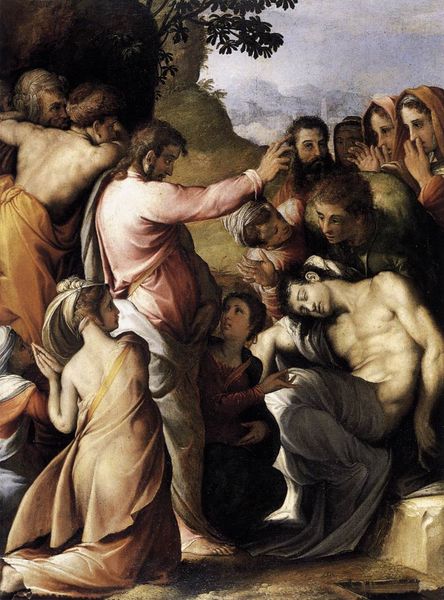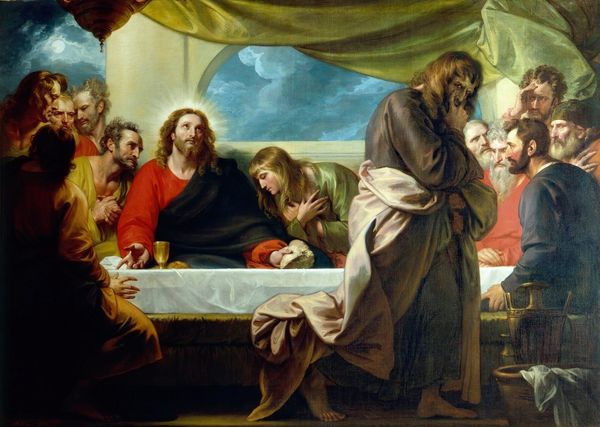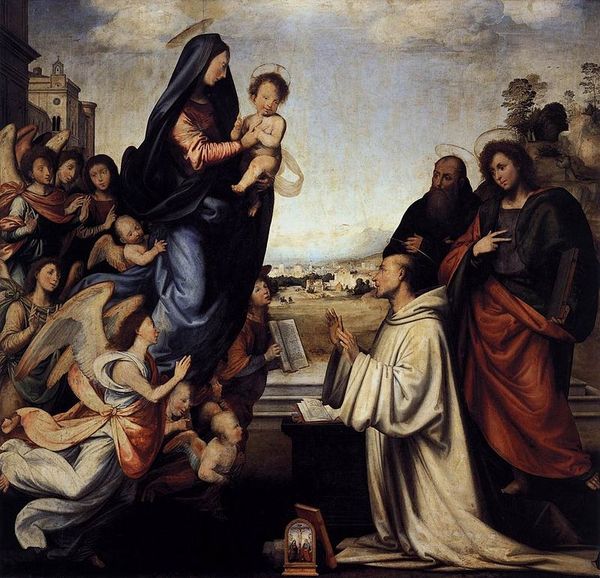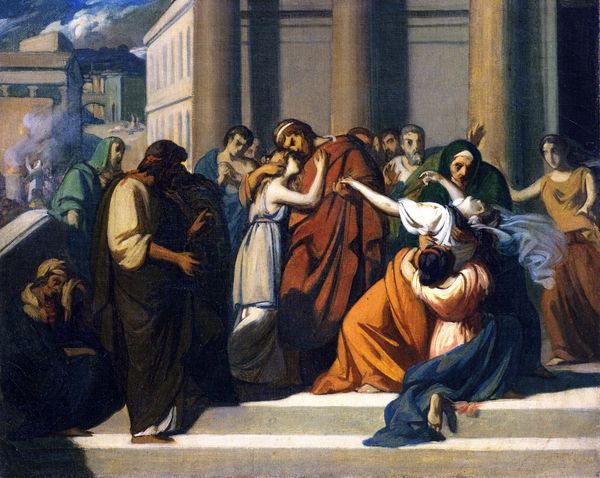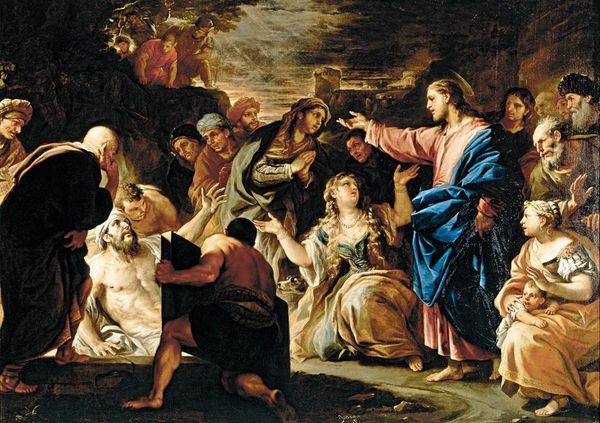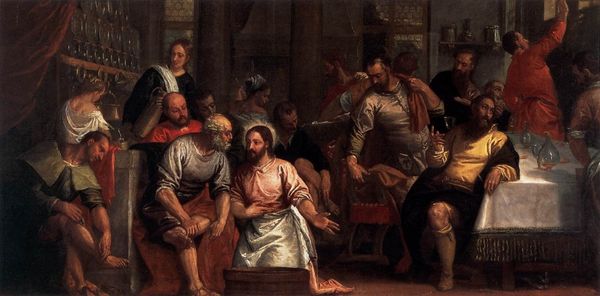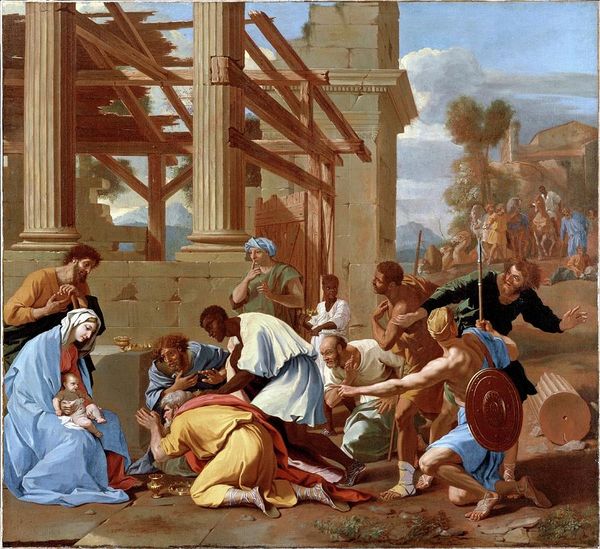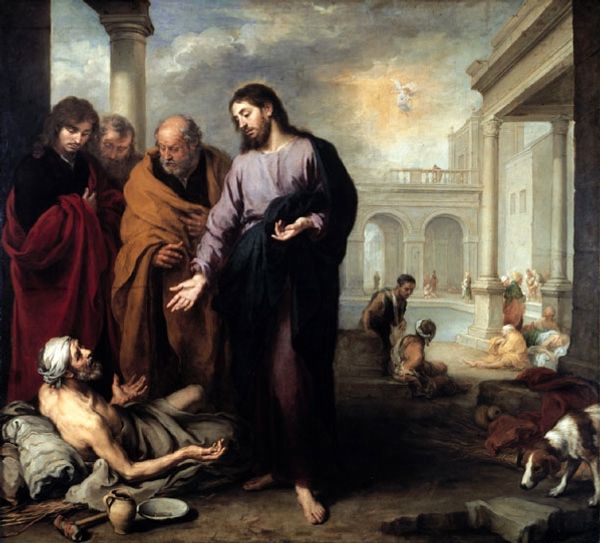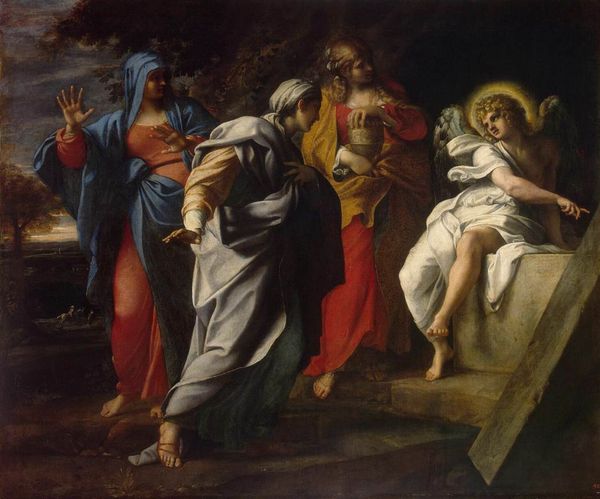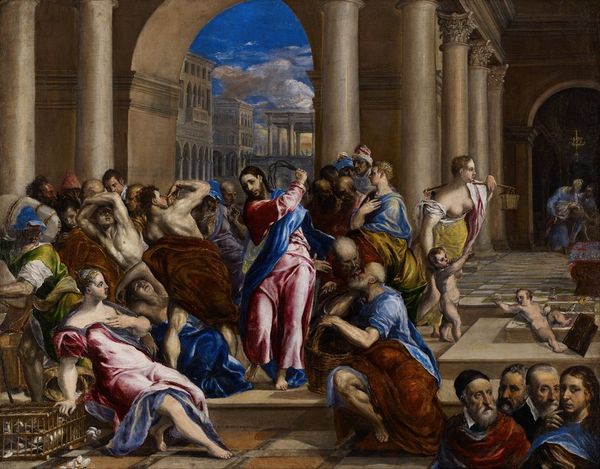
painting, oil-paint
#
narrative-art
#
baroque
#
painting
#
oil-paint
#
figuration
#
oil painting
#
group-portraits
#
genre-painting
#
history-painting
Copyright: Public domain
Curator: Here we have "Washing of the Feet," an oil painting by Palma il Giovane. The baroque style lends itself to drama, don't you think? Editor: Absolutely, my first impression is one of tension. It's almost claustrophobic—the figures are densely packed, the colour palette intense. I can sense a build-up of energy waiting to burst. Curator: Notice how il Giovane uses strong diagonals to create movement and draw the eye across the canvas. The bright garments also capture attention. The scene depicts a moment from the Gospel where Jesus washes the feet of his disciples, demonstrating humility. Editor: Precisely. That humility is radically subversive, of course. In the 16th century Venetian context, who had access to clean water, and who performed what duties for whom? This resonates powerfully with contemporary discussions around labor, class and even queer theory's challenge to patriarchal structures of domination. Curator: From a purely formal perspective, consider the use of light and shadow, or chiaroscuro, to heighten the emotional impact. The illumination centers on Christ and Saint Peter, almost theatrical. And that table set back in the top left corner creates a visual feast leading the eye into a vanishing point. Editor: But I wonder if this use of perspective actually serves to dilute the act of humility? It gives this painting a timeless aesthetic, almost distancing the religious narrative from tangible societal reformations. It begs the question whether the opulence actually distracts from the core message of social responsibility. Curator: It's a powerful scene depicted through classical means. Perhaps il Giovane wanted the narrative to be elevated beyond its immediate setting? To instill the enduring ideas and importance of these holy acts to his viewers regardless of the current Venetian socio-political environment? Editor: I'd argue the universality is achieved through abstraction rather than ornate grandeur; it has been stripped bare and placed against social issues so there is no confusing what the core idea represents in our day-to-day lives. Curator: It's true, there are varied interpretations, but looking closer it is interesting how certain formal techniques still provoke reaction hundreds of years later. Editor: Indeed. “Washing of the Feet" compels us to evaluate history's resonance through its inherent and deeply relevant complexities.
Comments
No comments
Be the first to comment and join the conversation on the ultimate creative platform.

